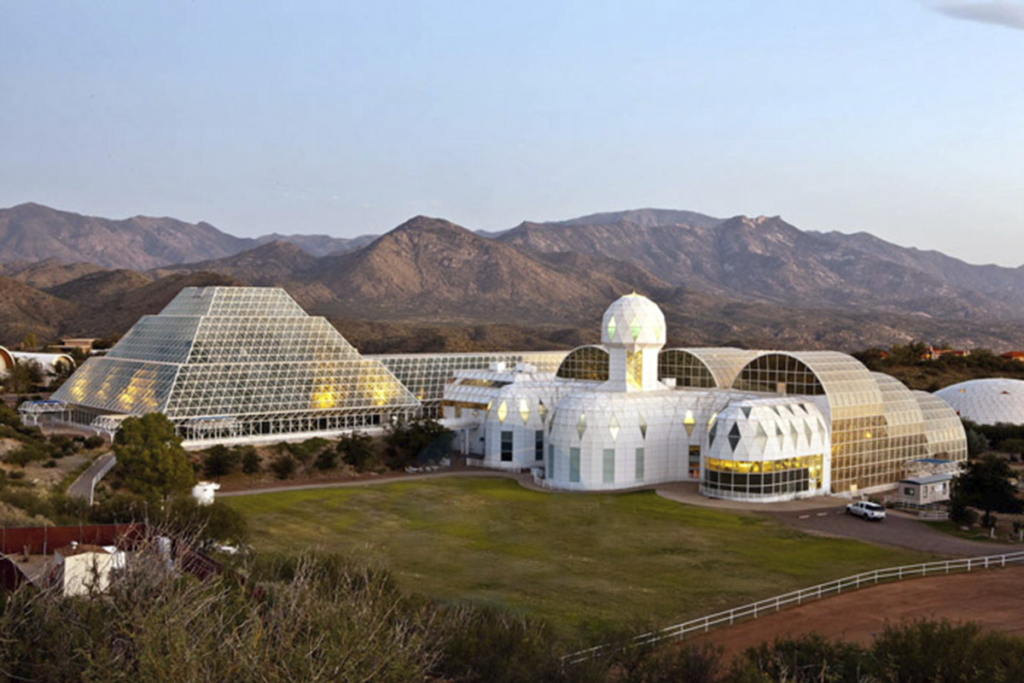EarthTalk®
From the Editors of E – The Environmental Magazine
Dear EarthTalk: What ever became of the Biosphere 2 project in Arizona and what did we learn from it? — B.C., Tampa, FL

Biosphere 2 project began in 1984, led by John Allen who called it “The Human Experiment.” The project sent eight explorers, or “biospherians,” to live in a sealed ecosystem for two years. The facility they would be living in came complete with an intensive agriculture unit and five separate biomes including a tropical rainforest and a savanna grassland. Early on, Biosphere 2 was the world’s first mini biosphere and became a landmark in the fields of biospherics and closed ecological systems. Many wondered why was it called Biosphere 2 if it was a first. That’s because Biosphere 1 is planet Earth.
The Biosphere 2 experiment was meant to explore the possibility of using closed ecological systems to support and maintain human life in outer space as an alternative to Earth’s biosphere. The three main goals of the experiment were education, eco-technology development, and to learn how well their eco-laboratory worked. The project also hoped to help NASA and other space agencies learn more about life-support systems for long-term space missions.
In 1991, the eight biospherians began what would be their two-year stay in Biosphere 2. The group consisted of four men and four women—five Americans, two Britons and one Belgian. Their plan would be to spend two years studying how a mini-biosphere would work with as few outside inputs as possible. As a fairly new concept, there were many challenges that came with living in an enclosed biome. The facility had to replicate many of Earth’s innate services, such as ocean waves. Each biome had to have the correct temperature and rainfall amounts. The biospherians also had to grow their own food and slaughter their own livestock. Growing their own food was such an endeavor that it required each crew member to work on farming three to four hours a day, five days a week.
Biosphere 2 dramatically expanded scientists’ visualization of what living off-planet would entail. It revolutionized the field of experimental ecology and proved that a sealed ecosystem could work for years, a lesson that the Mars colony planners can build off of. The experiment also provided lessons on how to maintain nature in the grasps of global warming. The biospherians learned how to keep stressed reefs alive, how to protect rainforests, and how to work with plants to keep carbon dioxide levels down.
Since 2006, the Biosphere 2 facilities have been owned and managed by the University of Arizona. It is no longer a closed ecological system, but a facility where ecological systems similar to Earth’s biomes are experimentally researched. These experiments allow scientists to learn more about the effects of global warming out in the real world. In 2023 the University of Arizona launched SAM, a Space Analog for the Moon and Mars. Built around the original Biosphere 2 facility, SAM serves as a controlled environment or greenhouse for visiting research teams to live while conducting individual research projects.
CONTACTS: Biosphere 2’s Lessons about Living on Earth and in Space, https://spj.science.org/doi/10.34133/2021/8067539; SAM Mars Analog, https://biosphere2.org/research/research-initiatives/sam-mars-analog; Biosphere 2: The Once Infamous Live-In Terrarium Is Transforming Climate Research, https://www.scientificamerican.com/article/biosphere-2-the-once-infamous-live-in-terrarium-is-transforming-climate-research/.
EarthTalk® is produced by Roddy Scheer & Doug Moss for the 501(c)3 nonprofit EarthTalk. See more at https://emagazine.com. To donate, visit https://earthtalk.org. Send questions to: question@earthtalk.org.
Viewers are encouraged to subscribe and join the conversation for more insightful commentary and to support progressive messages. Together, we can populate the internet with progressive messages that represent the true aspirations of most Americans.